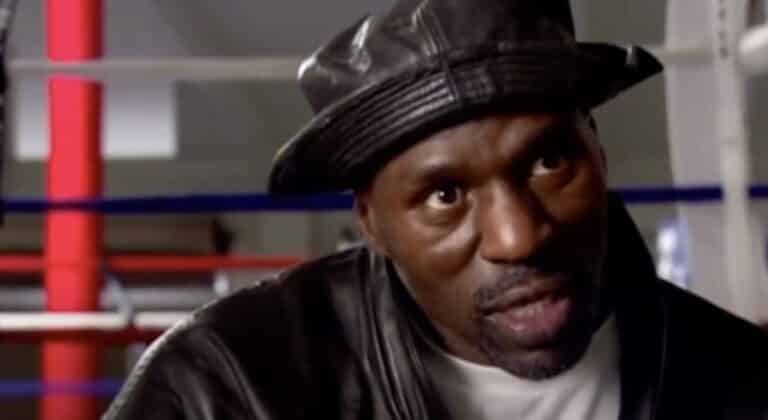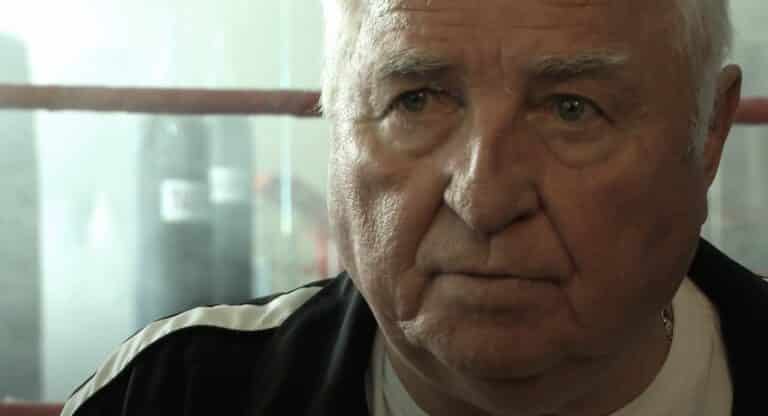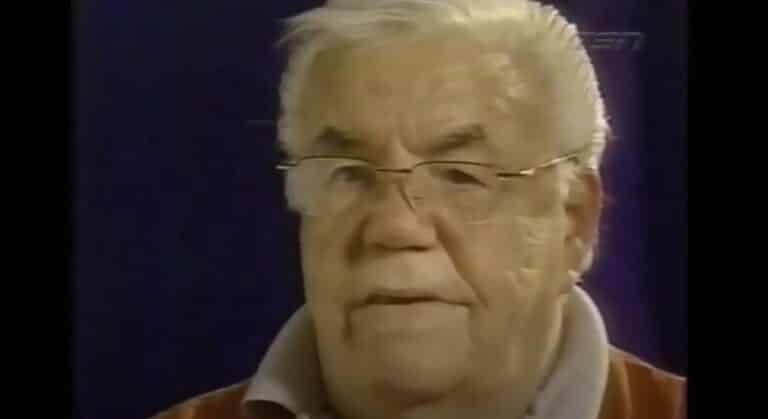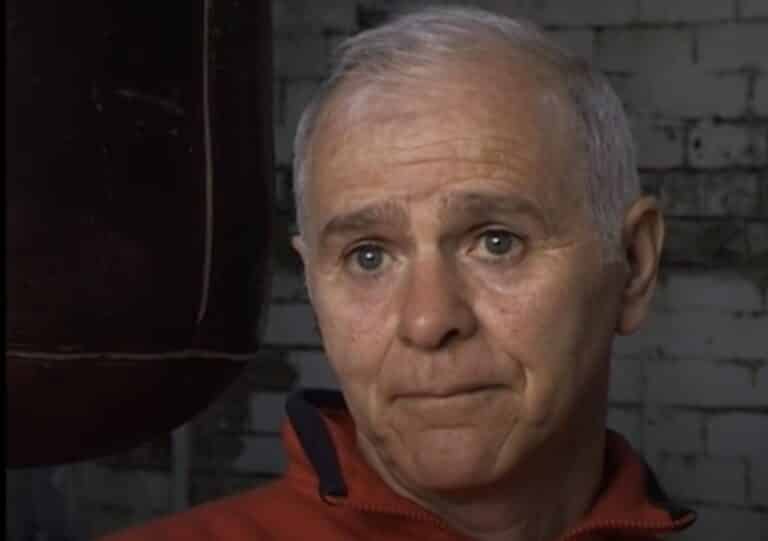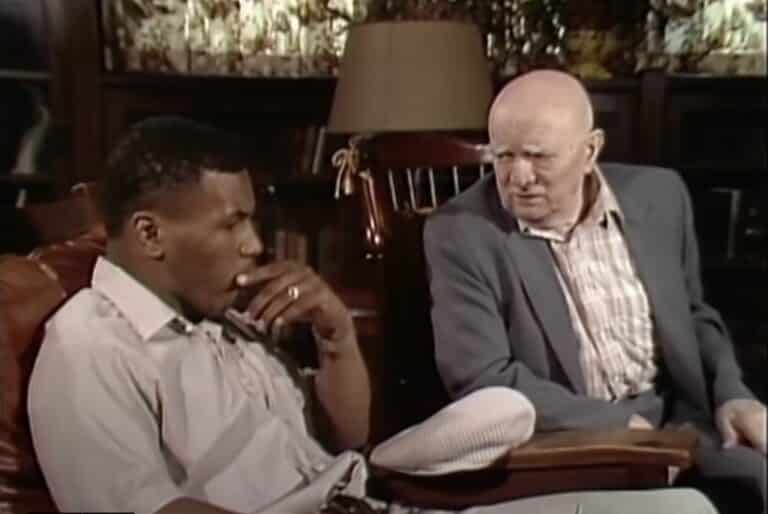Emanuel Steward – Boxing Coach Biography
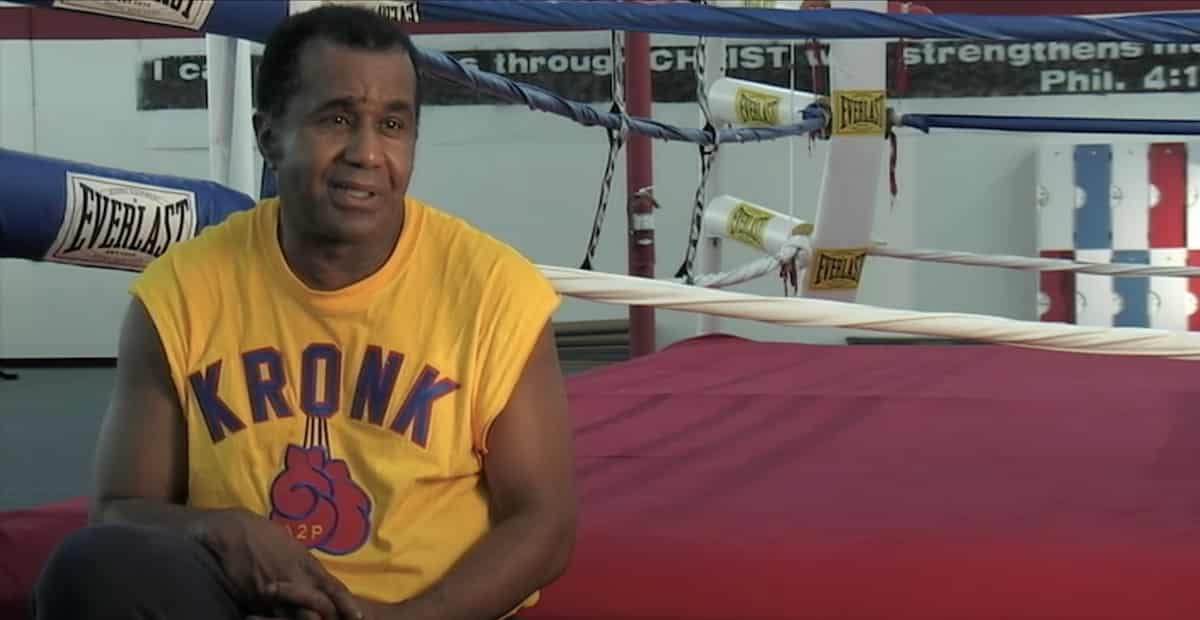
| Date of Birth: | July 7, 1944 |
| Died: | October 25, 2012 (aged 68) |
| Place of Birth: | West Virginia |
| Gym: | Kronk Gym |
| Location: | Detroit, Michigan |
| Boxing Background: | 1963 National Golden Gloves winner, compiled a 94-3 amateur record |
| Notable Fighters: | Thomas Hearns, Andy Lee, Milton McCrory, Wladimir Klitschko, Lennox Lewis |
Emanuel Steward’s Boxing Background
For someone synonymous with the city of Detroit, Emanuel Steward was actually born in the tiny community of Bottom Creek, West Virginia. After Steward’s mother divorced his father, she and 12-year old “Manny” moved to the Motor City in 1956. At that time Detroit was virtually the home of the entire US auto industry.
After finishing high school, the teenage Steward secured a job in a car factory. He also joined the famous Brewster Recreation Center, where the great Joe Louis had trained at the start of his illustrious ring career. Steward proved to be an outstanding boxer, winning the 1963 National Golden Gloves bantamweight title, and losing just three of his 97 amateur fights.
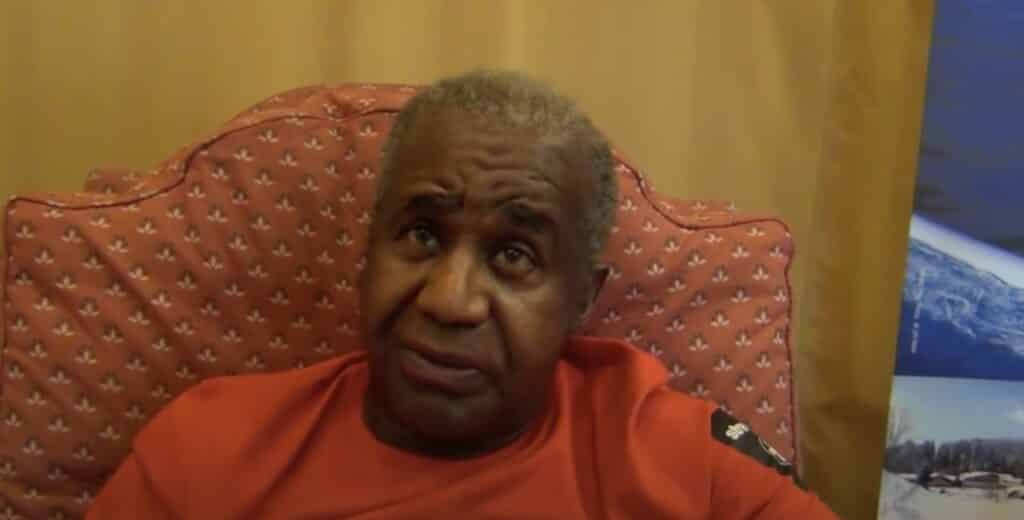
Emanuel Steward Becomes a Trainer
Despite his excellent amateur career, Steward elected not to turn pro. Instead in 1971 he and his brother James began coaching the kids at the nearby Kronk Gym. The Kronk had been in existence since 1929, but had been very much in the shadow of the Brewster-Wheeler Recreation Center with its connection to Joe Louis. However, all that was about to change.
Steward proved to be an even better boxing coach than a fighter. In the early 70s, the Kronk was wall-to-wall with talented young kids, and thanks to Steward’s innovative training methods, Detroit soon became home to many of Americas top amateurs. By the mid-70s, some of these fighters were keen to turn pro, and wanted Steward to keep training them. It was then that Steward made the transition to coaching professionals, and he would soon have one of the best pro stables in the country.
Thomas Hearns
The first Emanuel Steward protégé to make a major impact in boxing was a 19-year old Thomas Hearns in 1978. At 6’1” Hearns was unusually tall for a welterweight, and yet he looked far from frail. Hearns possessed a cold, almost sad-eyed stare – like a jaded hitman – and he punched incredibly hard. The result was a fighter who struck the same kind of abject fear into an opponent as Mike Tyson also would a few years later.
As an amateur, Steward had coached Hearns to focus on his boxing, and he compiled a 155-8 record, scoring just seven KOs. However once the amateur shackles were off, Steward taught Hearns how to use leverage to maximize his power. The result was a welterweight whose jab alone was a knockout punch.
Hearns had turned pro in November 1977, and would win his first 17 fights by KO before Alfonso Hayman took him the distance in April 1979, the only welterweight to accomplish that feat. In 1980 Hearns demolished Pipino Cuevas in two rounds to win the WBA welterweight title – the first of six world titles in five weight classes he would win. Hearns would compile a 61-5-1 record (48 KOs) defeating such greats as Cuevas, Wilfred Benitez, Roberto Duran and Virgil Hill and drawing with Sugar Ray Leonard.
The Kronk Gym
Back in the late 1970s, Emanuel Steward was a boxing coach unlike any other. He was young, softly spoken, and extremely bright. What’s more, his stable of fighters all seemed to have that lethal combination of boxing skill and knockout power. Alongside Thomas Hearns came such impactful young pros as Hilmer Kenty, Bernard Mays, Ricky Womack, Duane Thomas, Dwain Bonds, Milton McCrory and Dujuan Johnson.
Several young fighters found leaving the streets behind impossible, so while Kenty, Thomas and McCrory would become world champions, Johnson would be shot dead at 23 during a robbery. Light heavyweight Ricky Womack defeated Evander Holyfield twice in the amateurs and was Emanuel Steward’s most decorated amateur star, but despite being an undefeated young pro with a lucrative contract, he carried out a series of armed robberies that resulted in him serving 15 years in jail.
When Womack was paroled in 2000 he returned to the ring and won four fights before committing suicide aged 40. He was never beaten as a pro.
Mark Breland
In 1984 Mark Breland was the best amateur boxer in the world, and regarded by many experts as already the best welterweight on the planet –amateur or pro. After winning five straight New York Golden Gloves titles, the 6’3” Breland moved to Detroit to train at the Kronk under the tutelage of Emanuel Steward. It was Olympic year, and Breland didn’t want to leave anything to chance.
Ironically, Breland’s move to the Kronk almost proved disastrous. The 20-year old Breland fell under the spell of the Kronk’s charismatic amateur star Ricky Womack. Luckily for Breland, he was focused and disciplined enough to avoid going down the same disastrous path as Womack.
Steward helped prepare Breland for his gold medal winning success at the 1984 Los Angeles Olympics. Breland was America’s greatest ever amateur boxer, compiling a 110-1 record and winning every title available to him. As a pro, Breland would become a two-weight world champion and finish with a 35-3-1 record.
Lennox Lewis
While Emanuel Steward had already enjoyed tremendous success as a boxing trainer during the 1980s, his two most high profile coaching jobs were yet to come. In 1994 Britain’s Lennox Lewis was the WBA heavyweight champion. The 6’5” 250 lb Lewis had been born in London but had moved to Canada with his family when he was 12 years old. In 1988, Lewis had won the Olympic superheavyweight gold medal while competing for Canada.
However, when it came to turning professional, Lewis chose to do so in the UK, claiming he had always considered himself British. In 1992, Lewis knocked out Donovan “Razor” Ruddock in two rounds in a final eliminator for the WBC heavyweight title. When newly crowned world heavyweight champion Riddick Bowe dumped his WBC belt into a rubbish bin rather than face Lewis, Lennox was elevated to world champion status by that organization.
In 1994, former Mike Tyson sparring partner Oliver McCall was the no.1 contender for the WBC title. Talented but erratic, McCall had employed Emanuel Steward to train him for his crack at Lennox Lewis. It was Steward who spotted the flaw in the Lewis defense, and noticed how open the Brit was to a left hook. In the second round, McCall exploded a short left hook flush on Lewis’s jaw, flooring him heavily and resulting in a stunning stoppage victory for the challenger.
It speaks volumes to the intelligence of Lewis that after sacking his trainer Pepe Correa following his title defeat, he chose the instigator of his defeat – Emmanuel Steward – as the man to help him regain his championship belt. Once they began working together, Steward immediately addressed the flaws he saw in Lewis as a fighter. These included developing a more balanced stance, becoming less reliant on his right hand and instead focusing on his left jab as his primary weapon, and tightening up Lewis’s leaky defense.
Steward would train Lewis until Lennox retired in 2003. In 18 fights together, Lewis suffered just one defeat – a freak fifth-round KO loss to Hasim Rahman in 2001 that he avenged seven months later. Steward guided Lewis to victories over Tommy Morrison, Ray Mercer, Oliver McCall in a rematch, Andrew Golota, Shannon Briggs, Evander Holyfield, David Tua, Mike Tyson and Vitali Klitschko. Many experts place Lewis in the top-5 of all-time great heavyweights.
Lewis retired in 2003 with a record of 41-2-1 with 32 KOs.
Wladimir Klitschko
No sooner had Emanuel Steward watched Lennox Lewis waltz off into retirement than another giant Olympian with a penchant for getting himself knocked out would come a-calling.
In 2003, Wladimir Klitschko had lost his WBO world heavyweight title when he was knocked out in the second round by South African Corrie Sanders in a major upset. The 6’7” 250 lb Ukrainian was the 1996 Olympic superheavyweight gold medalist and brother of WBC heavyweight champion Vitali Klitschko. Wladimir was considered the more talented of the two but while Vitali had one of the greatest chins in heavyweight history and was never floored as an amateur or a pro, Wladimir’s jaw wasn’t made of the same stuff as big brother, and he would hit the deck more than ten times in his career.
In 1998, Klitschko had ran out of gas and been stopped in the 11th round by journeyman Ross Puritty in a shock result. Wladimir would regroup and go undefeated for the next five years, winning 16 consecutive bouts, 15 by KOs. In 2000, Klitschko scored a one-sided decision over Chris Byrd to win the WBO heavyweight title. Six title defenses followed, including a 6th round stoppage of the iron chinned Ray Mercer. Then came the shock defeat at the hands of the wild swinging Corrie Sanders, and suddenly Klitschko’s carefully reconstructed career was once again in tatters.
It was then that Klitschko approached Emmanuel Steward, hoping the now legendary American trainer might be able to accomplish the same kind of career resurrection he had achieved with Lennox Lewis a decade earlier. The Klitschko-Steward alliance didn’t get off to the best of starts; in 2004 Wladimir challenged Lamon Brewster for the vacant WBO heavyweight title, and suffered a savage 5th round KO defeat. Big brother Vitali demanded that his brother retire, and Wladimir’s refusal to do so led to the brothers falling out and not speaking to each other for a year.
In what may have been Emanuel Steward’s finest achievement, he rebuilt Wladimir Klitschko, turning him into a virtually unbeatable fighting machine. Although Klitschko became far more defense-orientated and overly cautious, he maximized his huge size, his height, reach, boxing skills and KO power to full effect. Klitschko KO’d Chris Byrd in seven rounds to win the IBF heavyweight title in 2006, eventually adding the WBA and WBO belts to his collection. He stayed unbeaten for 11 years, defeating the likes of Hasim Rahman, Ruslan Chagaev, Sam Peter, David Haye and Kubrat Pulev.
Other Fighters
Emanuel Steward trained almost 50 world champions and top contenders during his long career including Julio Cesar Chavez, Kermit Cintron, Miguel Cotto, Chad Dawson, Oscar De La Hoya, Jeff Fenech, Andy Lee, Oliver McCall , Mike McCallum, Graciano Rocchigiani, Leon Spinks, Jermain Taylor, Tony Tucker, Naseem Hamed and Evander Holyfield.
He was elected into both the International Boxing Hall of Fame and the World Boxing Hall of Fame. Steward passed away from colon cancer in October 2012, aged 68.

